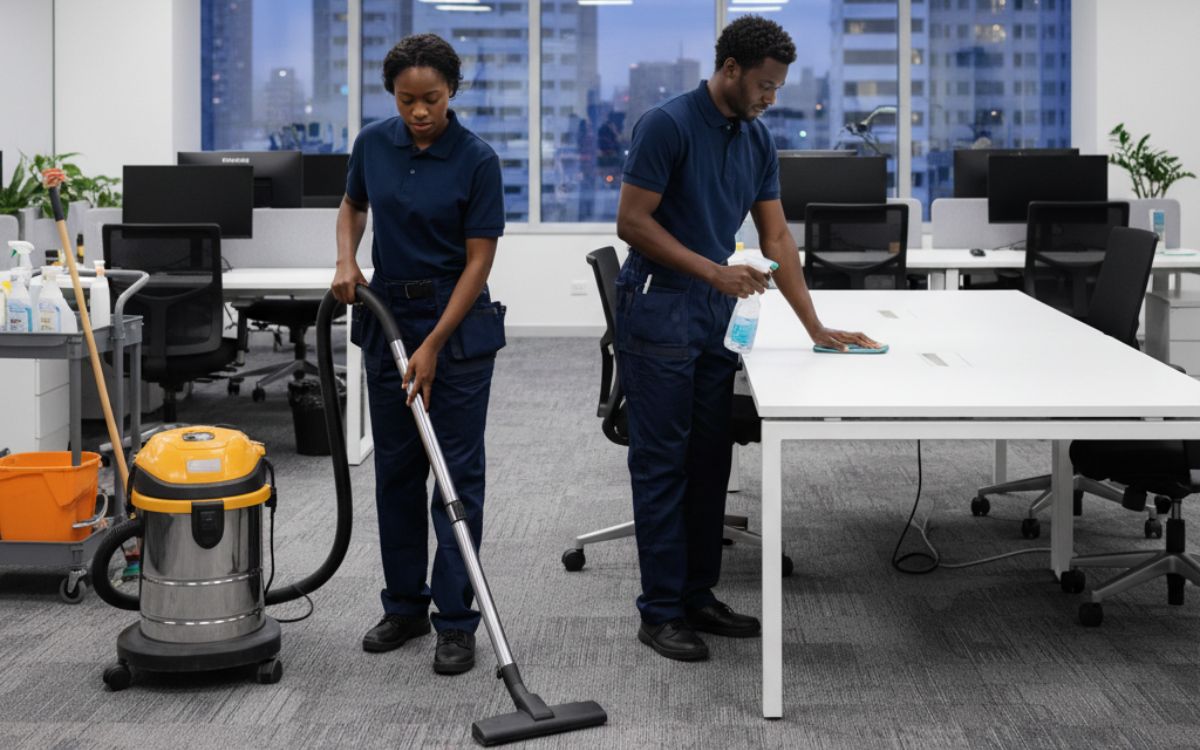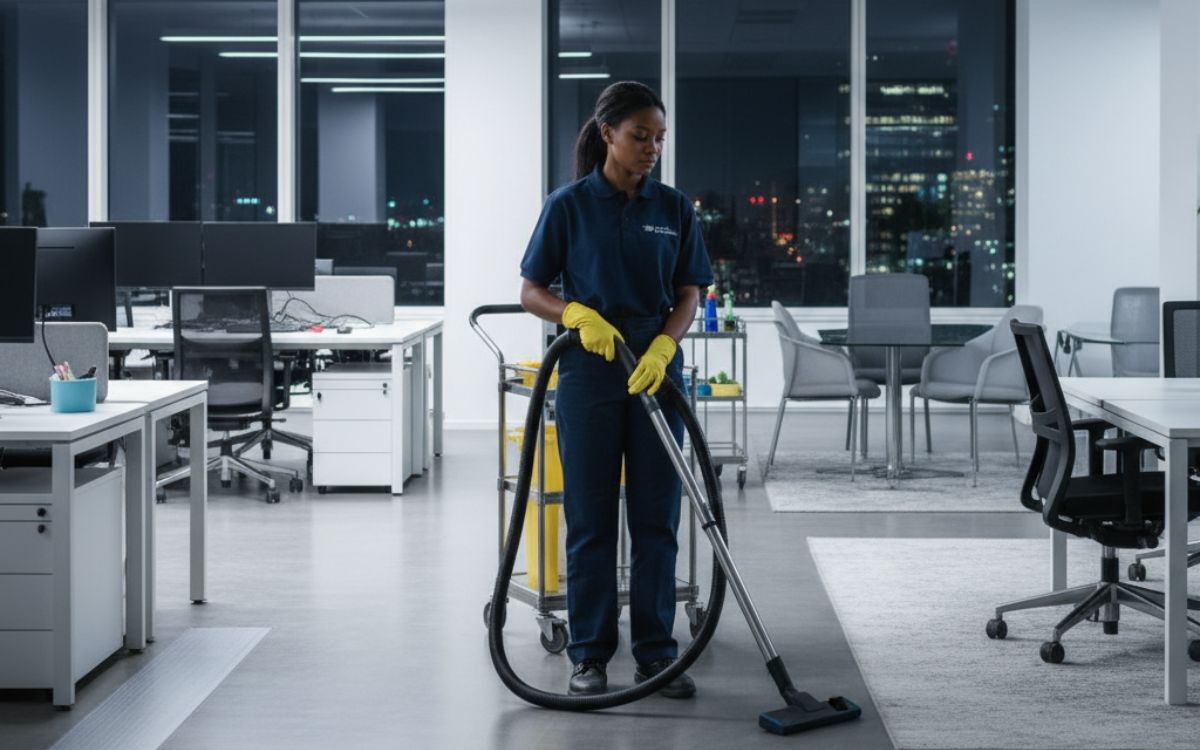The essential role of a clean workspace in maintaining a healthy and productive environment is often overlooked. Simply following the General Safety Regulations, however, will in turn ensure you have a strong workplace cleaning protocol in place. These regulations mandate essential systems like risk assessments, appropriate PPE, and the safe storage and use of cleaning substances to prevent workplace slips and falls.
This article will simplify the regulations and show you how to leverage them for a safer, healthier workplace.
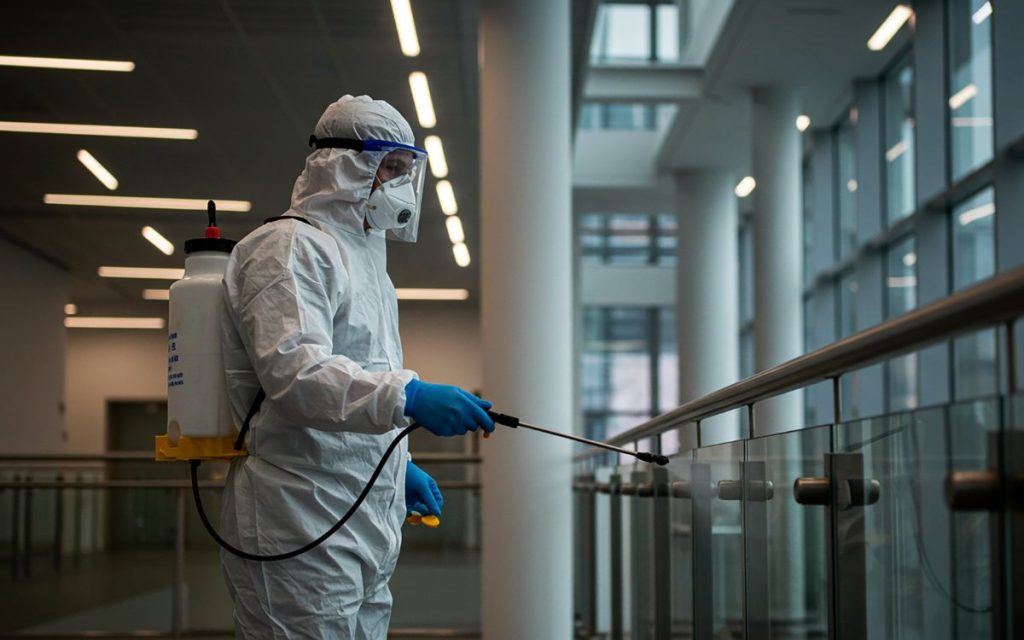
General Safety and Cleaning Regulations Include Awareness and Prevention
Understanding safety regulations is the first step, but putting them into practice is where a proactive cleaning strategy truly shines. This focuses on a two-pronged approach: awareness and hazard mitigation. Your cleaning team is on the frontline, and their ability to recognise and prevent risks is important for a safe working environment.
The Power of Awareness
Awareness is more than identifying dirty areas. It means your cleaning team can spot a potential hazard before an accident happens. For example, a cleaner might notice a liquid spill near an electrical outlet. Their training should prompt them to address this immediate risk by not only cleaning the spill but also alerting management to the electrical hazard.
During cleaning, they should use clear signage and barriers, like a “Wet Floor” sign, to communicate temporary risks to others.
Proactive Hazard Mitigation
Proactive hazard mitigation means taking action to prevent problems. This involves more than just a quick wipe down. It means immediate and correct cleanup of spills to prevent slips and falls.
This also includes the identification and reporting of damaged equipment or infrastructure that poses a risk, such as a loose handrail or a frayed electrical cord.
Understanding and Following Established Procedures
A professional cleaning team follows established procedures to ensure consistency and safety. This includes using a documented cleaning schedule and checklist to ensure no area is overlooked, from high-traffic walkways to less-frequented storage rooms. It also means following established protocols for the proper dilution and use of cleaning chemicals, which prevents damage to property and protects the health of the cleaning staff and others.
The Role of Personal Protective Equipment in Cleaning
Personal Protective Equipment, or PPE, is an essential part of any cleaning operation. It is the last line of defence between a cleaner and potential harm from chemicals or other hazards. Selecting the right PPE and using it correctly is a critical requirement of the General Safety Regulations.
- Selecting the Right PPE for the Task: The choice of PPE must match the specific job. For example, a cleaner using a strong chemical to sanitise a bathroom needs chemical-resistant gloves and possibly a mask, while a cleaner using a mild, eco-friendly product may only need general-purpose gloves.
Understanding Safety Data Sheets (SDS) is vital in these cases. These documents, provided by the manufacturer or supplier, specify the required PPE for each chemical and are a legal requirement.
- Proper Use, Maintenance, and Storage: Simply having the correct PPE is not enough; it must be used correctly. This includes proper procedures for putting on and taking off gear to avoid contamination.
To make reusable PPE effective and hygienic, regulations mandate:
- Cleaning: The team must clean the PPE after each use to remove chemicals and dirt.
- Storage: Store PPE in a clean, dry place to prevent damage and re-contamination.
- Replacement: Regularly inspect PPE for wear and tear and replace it as needed.
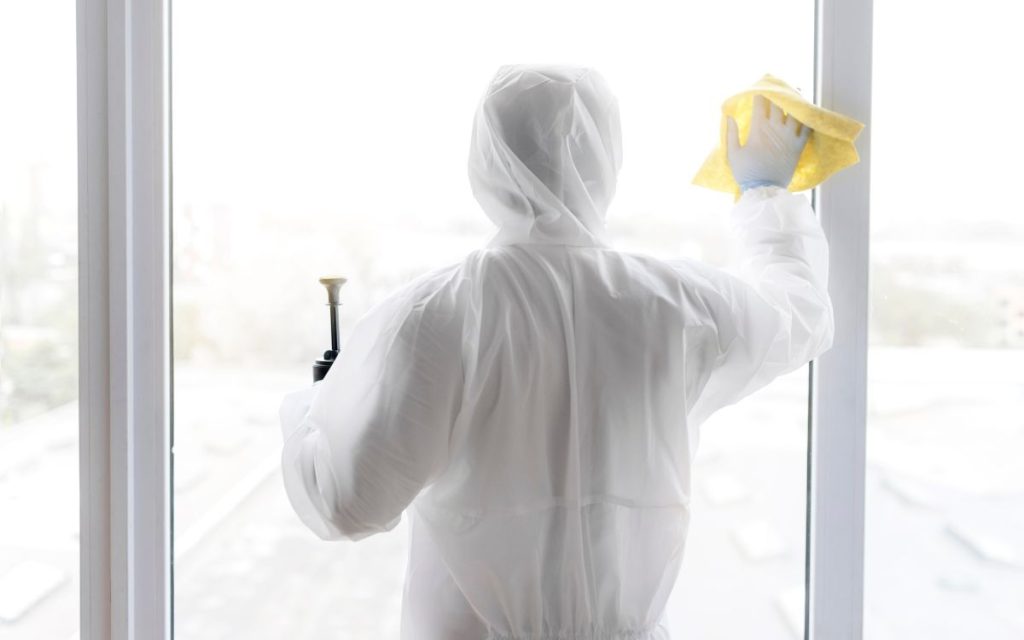
Establishing Safe Habits: Workplace Cleaning Practices
Safety is built into daily routines and habits so that your workplace is not only clean but also safe and compliant. Let’s look at the importance of routine practices, from how cleaning materials are stored to how equipment is handled.
Maintaining a Clean and Organised Work Environment
An organised workplace is a safer workplace. Designating and using specific, well-labelled storage areas for all cleaning supplies is crucial to prevent accidents and confusion. It is also important to ensure that cleaning materials and carts do not obstruct walkways, fire exits, or fire equipment. These simple steps can prevent trips and falls, which are common and costly workplace injuries.
Using Tools and Equipment Properly
Proper training on all cleaning machinery is a must, from vacuums to floor buffers. A professional cleaning team must be trained to use equipment correctly and efficiently. This also involves regular inspection of equipment for damage or malfunction before use to ensure it is in good working order.
Safe Handling of Chemicals
A clear system for chemical labelling and storage prevents accidental mixing of substances, which can create dangerous fumes. Proper ventilation is also a key factor when using strong cleaning agents to prevent the buildup of hazardous vapours, protecting the health of the cleaning staff and others.
Be Ready for Anything
Even with the best plans, emergencies can happen. This is why your cleaning crew must be ready to respond quickly and correctly. A strong safety protocol includes emergency preparedness that is directly linked to cleaning operations.
Know Emergency Procedures
Your cleaning team needs to know the correct response to an emergency. For example, if a container of a strong floor cleaner breaks, the team should know to immediately cordon off the area, use an absorbent material to contain the spill, and follow the specific cleanup instructions on the product’s SDS.
Have a Clear Chain of Command
A clear chain of command is crucial for any emergency cleaning response. Your team should have a clear protocol for immediately reporting any injuries or near-misses related to cleaning. For instance, if a cleaner slips on a wet floor but doesn’t get hurt, they should still report the incident.
This allows management to address the root cause, such as a lack of “Wet Floor” signage. They must also know who to contact for assistance during a cleaning-related emergency, whether it is a supervisor, a first-aid officer, or emergency services.
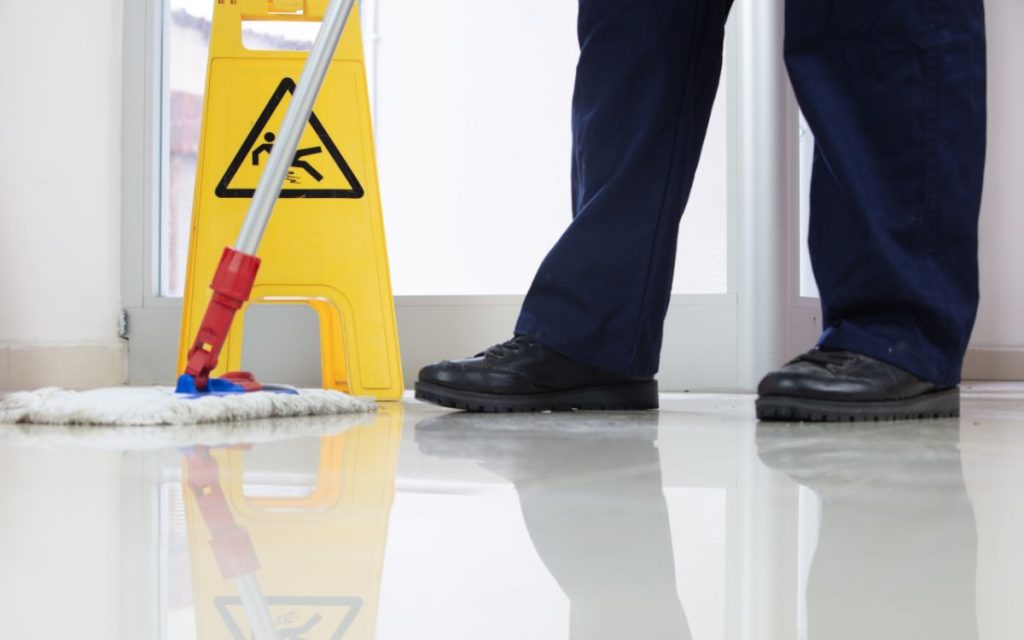
Build A Culture of Safety
The most effective cleaning safety strategy includes a strong safety culture. This means every person in the workplace, from management to the cleaning crew, understands their role in maintaining a secure environment. Below are two key elements of a strong safety culture.
- Staff Training: Regular cleaning training is a must for all staff, including your cleaning team. This includes refresher sessions on updated cleaning protocols and safety regulations. It’s also important to create a supportive environment where staff can openly communicate any safety concerns without fear.
- Commitment to Compliance: When leadership shows a real commitment to compliance, it sets the tone for the entire company. This encourages everyone to take ownership of safety.
Create a Strategic Approach to Your Workplace Cleaning Protocols
When you approach your workplace cleaning protocols through the lens of the General Safety Regulations, you start to build a more productive, healthier, and ultimately more profitable workplace. Don’t leave your company’s safety to chance. Contact us to ensure your cleaning protocols are a true asset to your business.


